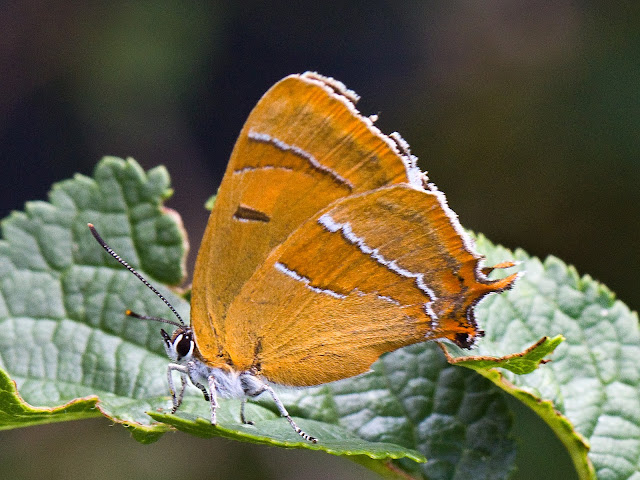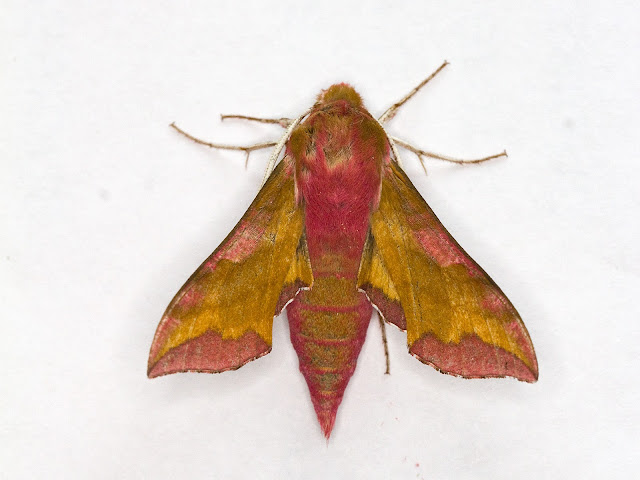Out walking on the Downs recently, there were still a lot of butterflies on the wing but most were starting to look a bit worn. There will still be fresh looking Red Admirals, Peacocks and Brimstones around for a few months yet and possibly even a Short-tailed Blue but the end of the butterflying season is usually marked by the emergence of the Brown Hairstreaks. When most other species are past their best the flash of bright orange stands out amongst the drab browns - that is, if you manage to find one.
Fortunately we have a couple of good sites close by and this year we headed over to Steyning Rifle Range in search of the target. Target butterfly that is, no shots have been fired here since the 1980s.
I would like to say what a wonderful day we had but Brown Hairstreaks always seem like hard work. We arrived early and spent two to three hours searching for that flash of orange. A complete waste of time. Males tend to stay on territory in the tops of the Ash trees, whilst the females coming down to the Blackthorn to lay eggs don't usually appear until after 11am. If you are really lucky you may find one sunbathing or nectaring on Brambles or Fleabane after egg laying.
We did eventually get to see a couple and it was worth the wait but only just.
It has been an unusual butterflying year. We had a shortage of the blue species early in the year. It did improve a bit late summer but they were still not in the numbers I would expect, yet walking on the downs now there seems to be good numbers of second broods.
Plants also seem to be out of sync with the butterflies. We usually visit Houghton Forest in August to photograph Silver-spotted Skippers and White Admirals on the Hemp Agrimony. Not only is it a great nectaring plant but it is four or five feet tall so you don't have to go crawling about on your hands an knees to get your shots. This year it flowered late, it looks good now but the shots are not really what I was looking for.
 |
| Hemp Agrimony looking good but I can't say the same for the Silver-washed Fritillary |
 |
| Or for the White Admiral |
Fortunately the Small Tortoiseshells are still looking good.
 |
| Small Tortoiseshell |
The Buddleia in my garden at home also seems to be having a bad year. It flowered at about the right time but it doesn't seem to be attracting the butterflies this year. Perhaps nectar levels are linked to temperature and moisture levels.
A late push has eventually raised my butterfly list for the year to more respectable levels. There are forty seven butterflies that can be seen in Sussex in a good year. I missed out on the Purple Emperor and Purple Hairstreak and the jury is still out on the Long-tailed Blue which could be flying through to the end of October. Still forty four is not a bad count and if the Large Tortoiseshell becomes established in Sussex I could be looking for forty eight next year.
Below are some of the late additions to the list.
 |
| Brimstone |
 |
| Brown Argus |
 |
| Clouded Yellow - it's a bit tatty but they all count |
 |
| Common Blue |
 |
| Silver-spotted Skipper |
 |
| Small Copper |
 |
| Speckled Wood |
 |
| Wall |




















































